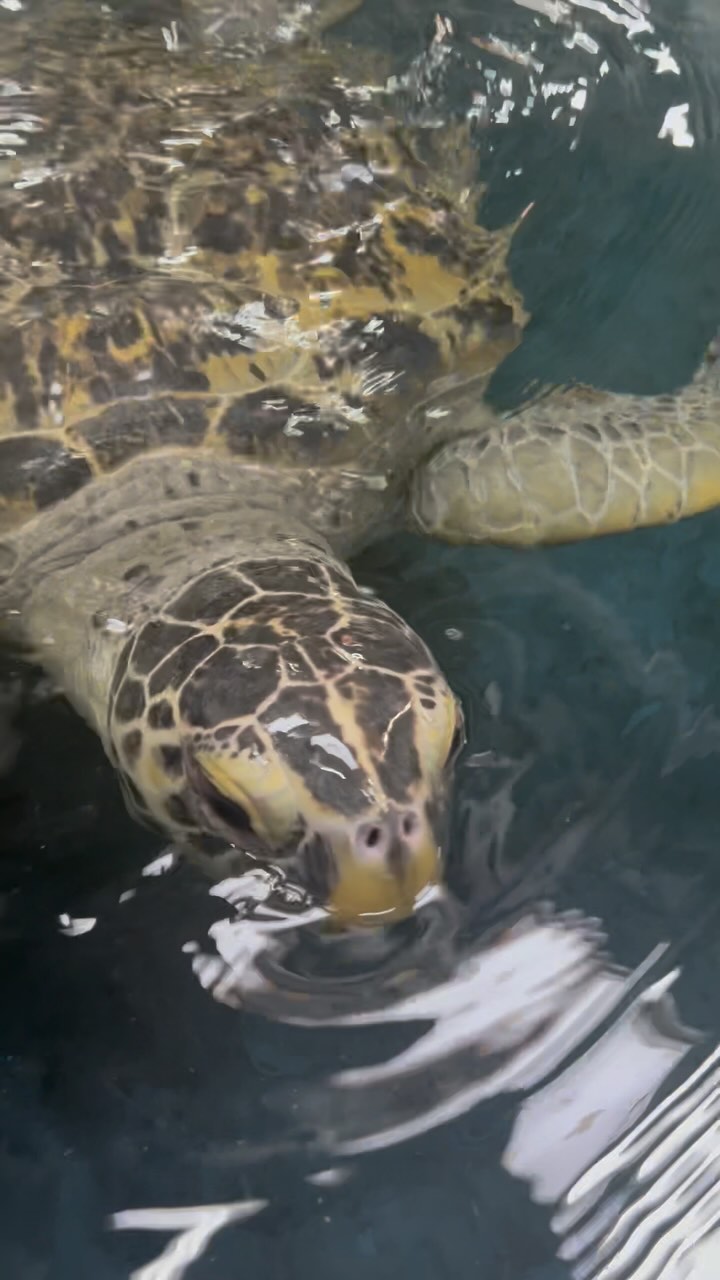– Individualized care for aquatic animals: a look into personalized feeding practices
– Fish behavior and dietary needs: understanding piscine nutrition in controlled environments
– Conservation and animal welfare: how attentive nurturing contributes to species survival
– The role of aquarists and zoo professionals in maintaining balanced ecosystem simulations
– Educational impact and public engagement: fostering awareness through marine animal care
Aquariums and marine parks often adopt specialized feeding regimes to ensure the health and necessary nutrition for their aquatic inhabitants. This careful approach takes on even greater significance when considering the varied dietary needs and behaviors of different species cohabiting in a replicated ecosystem. In the case of Gabby, an assertive fish residing in the Dangerous Reef exhibit, hand-feeding has become not a mere novelty but an essential practice for multiple reasons.
Individualized care, such as that provided to Gabby, exemplifies an advanced understanding of animal behavior. Much like their terrestrial counterparts, aquatic creatures can exhibit unique feeding habits that may necessitate bespoke intervention. Gabby’s boldness, to the point of snatching food from the mouths of sharks, presents a risk to her wellbeing and the careful balance of the exhibit’s feeding hierarchy. By hand-feeding her, aquarists can monitor her intake to maintain optimal nutrition while preventing aggressive interactions during communal feeding.
The underlying science of fish nutrition in controlled environments, such as aquariums, requires a profound grasp of the specific needs of each species. Generally, fish diets are formulated to meet the requirements of a specific species and their natural eating habits. While basic nutritional demands may be met with generic feeds, the personalized hand-feeding approach delivers a tailored diet, which, for predators like sharks, will include vital nutrients gained from whole prey items that might not be as adequately consumed in a competitive feeding frenzy.
Furthermore, the conservation perspective cannot be understated. Species survival programs often rely on meticulous records of individuals’ health within the populations under their care. Isolating specimens for feeding allows aquarists to record dietary intake and spot early signs of health issues, which may indicate broader concerns within the habitat or be specific to the individual. The accumulative health data contributes to an extensive knowledge base that informs captive breeding programs and strategies for addressing challenges in the wild.
The diligence and expertise of aquarists and zoo professionals are paramount in creating and maintaining these controlled ecosystems. These professionals must have extensive knowledge of marine biology, animal behavior, and dietary nutrition, coupled with practical skills in animal handling. They are responsible for the day-to-day care of the creatures within their charge, carefully preparing diets and noting any changes in appetite or behavior that may signal health problems. They also have a hand in designing enrichment activities that replicate natural behaviors and contribute to the overall wellbeing of the animals.
Lastly, the impact on education and public engagement is substantial. Observing the direct, hands-on care of marine animals like Gabby can be a profound learning experience for visitors. It conveys messages about the complexity of managing marine life, the importance of individual animal welfare, and the dedication required from professionals in the field. Hand-feeding sessions have become interactive tools that underscore the connection between humans and marine life, and they play a crucial role in inspiring conservation efforts.
The educational implications of such practices are intrinsic to the narrative of species care in aquariums. When guests observe a professional hand-feeding Gabby, they can engage with the public about her diet, the reasons behind her separate feeding routine, and the broader nutritional frameworks applied within the Dangerous Reef exhibit. These interactions are opportunities to share knowledge on marine ecosystems, conservation issues, and the role humans play in the health of our oceans.
Aquariums are not just displays of marine splendor; they serve as windows into underwater worlds where every detail, from water quality to feeding practices, contributes to the collective thriving of diverse species. By hand-feeding individuals like Gabby, these institutions demonstrate their commitment to high animal welfare standards, the pursuit of scientific understanding, and the fostering of a conservation mindset among the public. Such care reflects humans’ critical role as stewards of aquatic life, ensuring their survival for future generations to study, appreciate, and protect.
*****
Source Description
Gabby is hand-fed separately from the rest of her fishy friends in the Dangerous Reef. This is so we can monitor what she eats every day—and because she has a habit of eating food out of sharks’ mouths!


